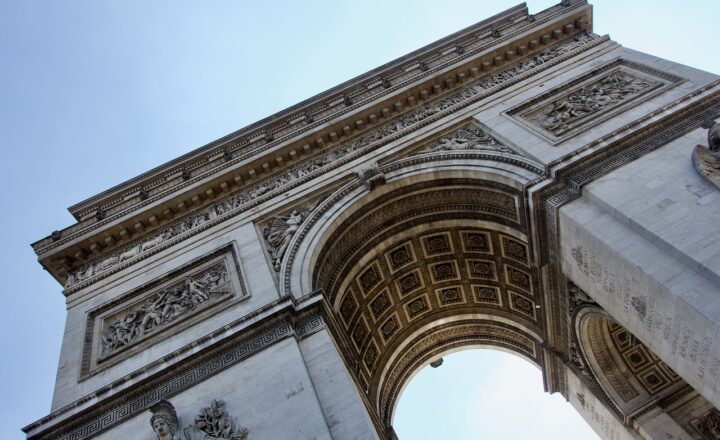How Some of the Most Beautiful and Expensive Artifacts Were Lost During Wars and Recovered Decades Later
November 17, 2024

Throughout history, wars have disrupted societies, destroyed livelihoods, and most tragically, decimated our cultural heritage. Artifacts that hold deep historical, artistic, or emotional significance have disappeared in the chaos of battle, often taking decades or even centuries to be recovered, if at all. This article explores some of the most beautiful and expensive artifacts that were lost during wars and subsequently recovered, shedding light on the resilience of human spirit and society’s commitment to preserving its heritage.
1. The Elgin Marbles: A Tale of Plunder and Restoration
The Elgin Marbles, originally part of the Parthenon in Athens, are one of the most famous examples of cultural artifacts that were effectively stolen during the tumultuous period of the early 19th century.
In 1801, Lord Elgin, a British ambassador to the Ottoman Empire, obtained permission to remove a significant portion of these sculptures from the Parthenon. The intent was to preserve them in Britain, but the reality of their acquisition is steeped in controversy. Many consider it an act of plunder that led to the loss of an essential piece of Greek heritage.
For almost two centuries, the marbles resided in the British Museum, where they became a source of contention between Greece and Britain. In recent years, Greece has sought to recover the Elgin Marbles, advocating for their return to Athens. Today, the debate continues, symbolizing ongoing struggles over cultural heritage stolen during periods of conflict.
2. The Return of the Benin Bronzes
The Benin Bronzes are a collection of intricate plaques and sculptures that adorned the Royal Palace of Benin in present-day Nigeria. These artifacts represent the artistic prowess of the Benin Kingdom and its rich cultural heritage. However, during the British punitive expedition in 1897, many of these treasures were looted and taken to Britain, where they have since been displayed in various museums.
For over a century, the legitimacy of their acquisition has been called into question. In recent years, initiatives have been launched to return the Benin Bronzes to Nigeria. Institutions such as the British Museum have begun to engage in conversations regarding repatriation, reflecting a growing recognition of the importance of cultural justice.
3. The Guarding of the Guelph Treasure
The Guelph Treasure, a stunning collection of medieval artifacts, was originally part of a much larger horde accumulated by the Guelph dynasty in Germany. During World War II, this precious treasure faced potential destruction when Nazi forces invaded and began plundering valuable artworks across occupied Europe.
Fortunately, the majority of the Guelph Treasure was hidden in a safe location and subsequently recovered after the war. In the years that followed, detailed discussions regarding the ownership and repatriation of such artifacts emerged as countries sought to reclaim their cultural heritage. The Guelph Treasure saga stands as a stark reminder of the fragility of cultural artifacts during war and the lengths to which individuals will go to protect them.
4. The Return of the Iraqi Artifacts
In the wake of the Iraq War in 2003, countless priceless artifacts from Iraq’s rich cultural history fell victim to looting and destruction. The Iraq Museum in Baghdad, housing thousands of priceless items from ancient Mesopotamia, was raided during the chaos of war, resulting in the loss of around 15,000 artifacts, many of which remain missing to this day.
However, persistent efforts to recover these artifacts have been underway. The U.S. government has worked with Iraqi authorities to facilitate the retrieval of stolen items, leading to significant recoveries, including sculptures, pottery, and inscriptions. The return of these artifacts embodies the resilience of the human spirit and the importance of cultural heritage recovery efforts.
5. The Treasure of the Nazis: The Monuments Men
During World War II, the Nazi regime was notorious for stealing valuable artwork and cultural artifacts from conquered territories. In response to this unsettling reality, the Allies established a group of art historians and museum curators known as the Monuments Men to locate, protect, and return these stolen artifacts to their rightful owners.
The efforts of the Monuments Men led to the recovery of countless invaluable works, including paintings by renowned artists like Vermeer, Raphael, and Michelangelo. This collaborative effort serves as a testament to the significance of art and history in healing societal wounds and restoring humanity after devastation.
6. Reclaiming the Cultural Heritage of Afghanistan
Afghanistan boasts a rich cultural history with artifacts dating back thousands of years. During the period of civil war and Taliban rule, many ancient sites, including the Buddhas of Bamiyan, were destroyed. However, efforts have been made to recover not only lost cultural heritage but also to protect and preserve what remains.
International collaboration and funding have supported the reconstruction and preservation of Afghan heritage sites and artifacts. Projects to digitize collections and establish educational programs have led to a gradual recovery of lost cultural identity and historical significance. The country’s story illustrates how cultural heritage can be resilient even amidst adversity.
Conclusion
The tumultuous nature of war often results in significant losses, notably in cultural heritage. However, as history has shown, the recovery of artifacts lost during these conflicts unveils a resilient narrative rooted in humanity’s preservation of its history and culture. The tales of the Elgin Marbles, Benin Bronzes, Guelph Treasure, Iraqi artifacts, and the efforts of the Monuments Men highlight our innate desire to recover, protect, and honor our past. As we continue to navigate conflicts around the world, safeguarding cultural heritage asserts not only a commitment to history but also a hopeful vision for future generations. Understanding and reclaiming our shared heritage inspires collective healing and growth in harmony with our shared human experiences.







